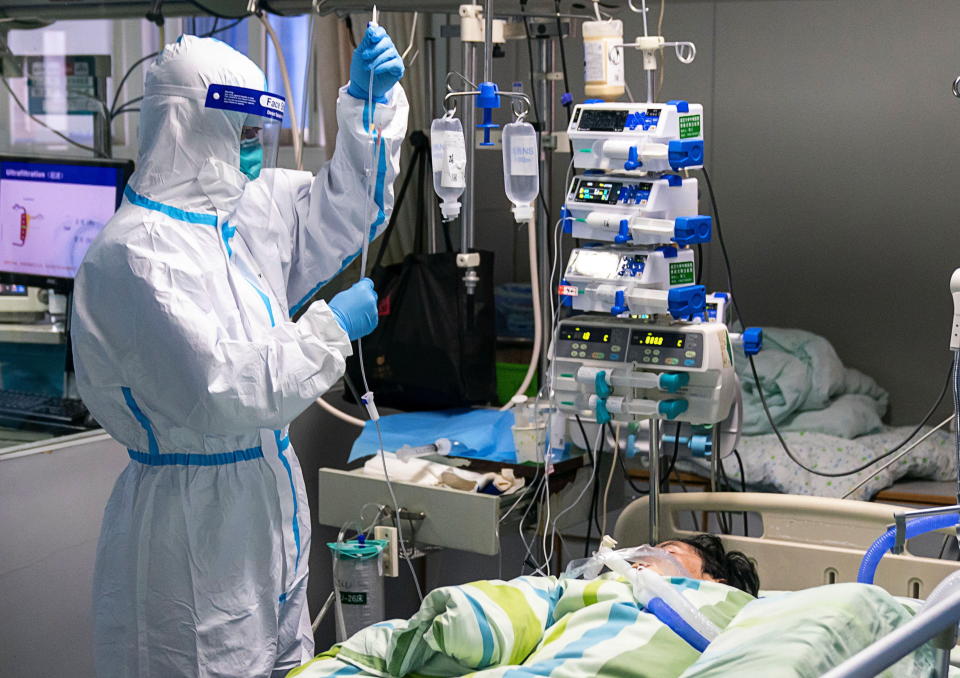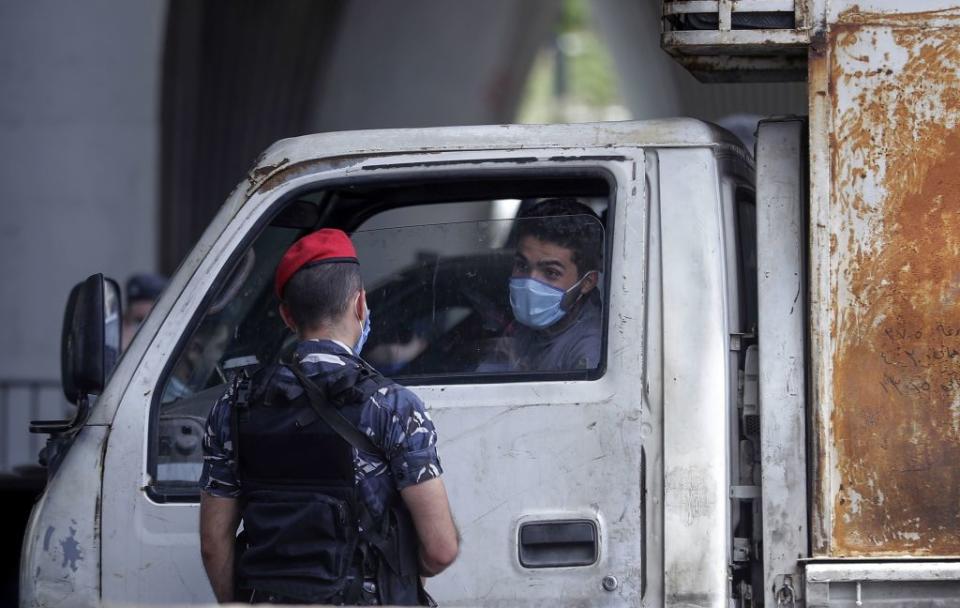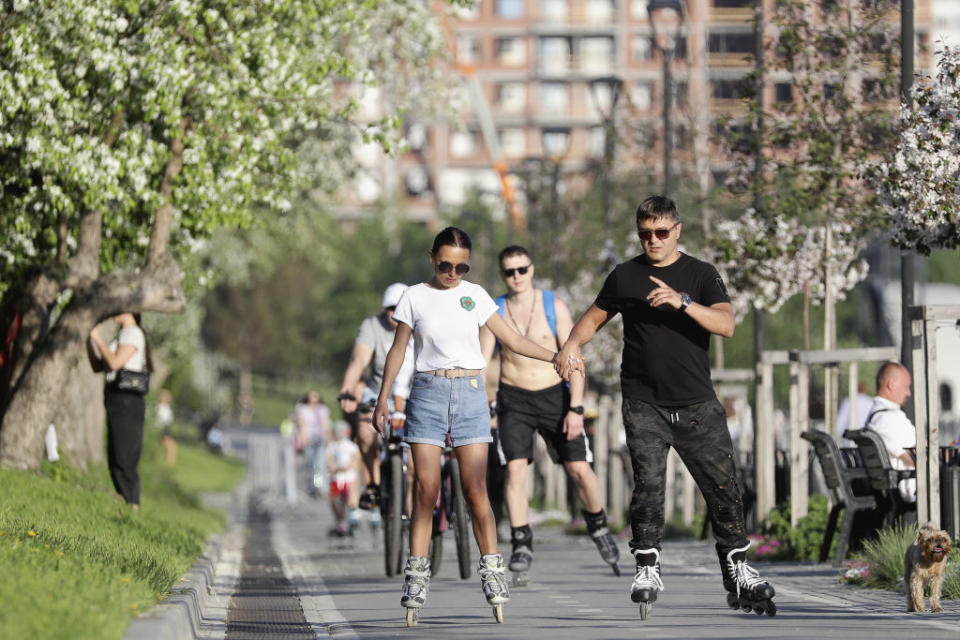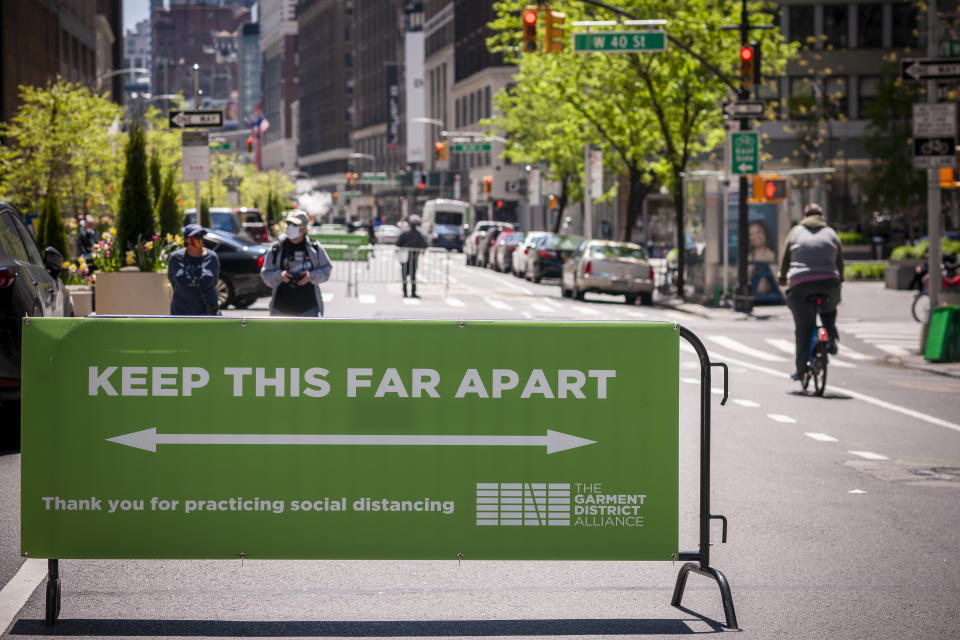'Our efforts going to waste': The countries facing more lockdowns after easing restrictions
Yahoo News Australia's Life After Lockdown series investigates what life will be like after coronavirus restrictions.
As coronavirus restrictions begin to ease in Australia, with Scott Morrison’s three-stage plan coming in to effect from Friday, there’s a worrying trend emerging across the world.
Other countries that appear to have eased restrictions too soon are now starting to see a second spike of coronavirus cases.
“Careful phasing of the lifting of restrictions allows us to act quickly should the number of new cases start increasing,” Professor of Biostatistics at the University of South Australia, Adrian Esterman, told Yahoo News Australia.

“However, in order for easing restrictions to work, it’s still important to undertake surveillance testing to ensure that community-acquired cases are under control, and the general public should still practice careful hand washing, and not go out if they have any symptoms."
The following countries’ experiences have served a warning to the rest of the world.
Coronavirus in Germany
Germany has had the sixth most coronavirus cases in Europe, with 171,000 confirmed cases. However, it has managed to limit deaths to 7500, compared with over 30,000 in Italy and the UK.
This is believed to be due to widespread testing and the strict lockdown that occurred in March.

How Germany eased restrictions
On April 20, Germany reopened non-essential businesses, and on May 4 schools, playgrounds, museums and churches opened their doors again, as well as hotels and restaurants in some states.
Bundesliga matches are due to resume on May 15.
German Chancellor Angela Merkel urged people to remain cautious, saying she believed the lifting of the restrictions in many states was “too brisk.” She said she would impose an “emergency brake”, which would allow her to reinstate restrictions if necessary.
'Thrown into chaos': Shocking scenes '45 minutes after bars open' in virus-hit state
Coronavirus: Three mistakes Australia must avoid to prevent second wave
Why Germany might go back into lockdown
The reproduction rate of coronavirus, known as R, is recommended to be 1 or less. After a week of relaxing social distancing rules, the R rate has risen to 1.1 in Germany.
One of the newest outbreaks occurred at a meat processing plant. The plant has been closed but there are fears many of the workers are living in shared accommodation, so the virus will have spread quickly.
If new infections rise to above 50 people in every 100,000 residents in a district over a seven-day period, local authorities will reimpose restrictions.

Coronavirus in China
With over 82,000 reported coronavirus cases, China was the first country to go into lockdown on January 23. Inside Wuhan, the birthplace of the pandemic, no travel in or out of the city was allowed, even for medical reasons.
How China eased restrictions
After 59 days of total lockdown, China started to see a decline in coronavirus numbers and eased restrictions.
Since the beginning of April, many people have returned to work, schools have reopened and Shanghai’s Disneyland is selling tickets after being closed for over three months.
Why parts of China are back in lockdown
There have been at least 15 confirmed new cases in the city of Shulan, resulting in the quarantine of 290 people after a laundry worker at the city’s public security bureau tested positive for COVID-19.
The government has locked down Shulan again and declared the province at high risk.
All vehicles have been banned from entering the city, and residents must stay at home once again with one person per household allowed out to buy essential items such as food or medication. Wuhan also confirmed five new cases on May 10 – the first since April 3.

Coronavirus in South Korea
With under 300 deaths, South Korea has been one of the COVID-19 success stories.
By the end of February, it had the highest number of coronavirus cases outside of China, with new confirmed cases doubling every few days.
But the swift actions of the government were credited with containing the virus. Residents were traced early on and everyone was urged to wear a mask. Within a month, the virus had been contained.
How South Korea eased restrictions
After gradually opening up public spaces, last week the South Korean government eased social distancing restrictions, telling people to ‘go out, socialise and have fun.’

Why South Korea might go back into lockdown
Just four days after reopening bars and clubs, a new cluster of new infections was discovered in Seoul. It’s believed to have originated from one person who visited three clubs during an evening.
The capital city has now closed down over 2000 bars and clubs, and authorities are trying to track down over 7000 people who were in the same nightclubs as the infected person.
“Just because of a few people’s carelessness, all our efforts so far can go to waste,” Seoul’s Mayor Park Won-soon said.

Coronavirus in Lebanon
Lebanon managed to flatten the curve by quickly imposing a lockdown and a nightly curfew enforced by the army. It worked, with just 26 deaths across the country.
How Lebanon eased restrictions
The country was keen to begin its five-phase plan to reopen the economy, as there are many people living in poverty due to economic turmoil. Restaurants have been allowed to function at 50 per cent capacity and most small business are operating while adhering to social distancing.
Why Lebanon is back in lockdown
The government has reissued a four-day lockdown from May 14, during which people should only leave their houses for “urgent needs.”
The small country has had just over 880 cases since the pandemic began, but over 100 of those have occurred since May 8. These are believed to be people returning to Lebanon on flights from overseas who have then gone on to infect the community.
“This government has made an important achievement in facing the challenge of the coronavirus epidemic. Unfortunately, due to complacency in some areas, and then neglect and irresponsibility of some citizens, this achievement is threatened with collapse today," Prime Minister Hassan Diab said.

Coronavirus in Russia
Russia went into lockdown at the end of March, with the Kremlin ordering all Russians who didn’t work in essential jobs to stay at home – while being paid – in an attempt to halt the spread of the virus.
The country’s total confirmed cases is over 252,000 – second in the world behind the US.
How Russia eased restrictions
The federal government announced the “non-working period” of the country would end on May 12 in order to get people back to work and stimulate the economy.
This is in spite of the fact more than 11,000 new cases were confirmed on May 11 and health officials are still recording around 10,000 virus patients a day. The government says the rise in cases is simply due to more testing.
Why some parts of Russia are back in lockdown
Half of the country’s cases have been recorded in Moscow, so although the federal government says lockdown is over, the mayor of Moscow has ordered a total lockdown until the end of May in the capital. He has ordered residents to wear masks and gloves if they have to use public transport for essential reasons.

Coronavirus in US
The US death rate from coronavirus is now more than 86,000 – the highest in the world. The country also has over 1.4 million confirmed cases. There have been nearly 22,000 deaths in New York alone, where it’s believed there are over 338,000 cases.
How the US eased restrictions
Despite Director of the National Institute of Allergy and Infectious Diseases, Dr Anthony Fauci, warning “consequences could be really serious” if things are opened up too quickly, Trump has been encouraging states to ease their restrictions.
So far, Indiana, Kansas, Nebraska, Iowa, Minnesota, Tennessee, Wisconsin and Texas have all partly reopened, with non-essential shops, gyms, beauty salons and places of worship all available for residents.
Why some parts of the US could go back into lockdown
Easing restrictions before the country has a handle on the spread of the virus could result in nearly 135,000 deaths, according to predictions from The Institute for Health Metrics and Evaluation at the University of Washington.
“Rising mobility in most US states as well as the easing of social distancing measures…. indicating that growing contacts among people will promote transmission of the coronavirus,” the institute wrote.
Do you have a story tip? Email: newsroomau@yahoonews.com.
You can also follow us on Facebook, Instagram and Twitter and download the Yahoo News app from the App Store or Google Play.





